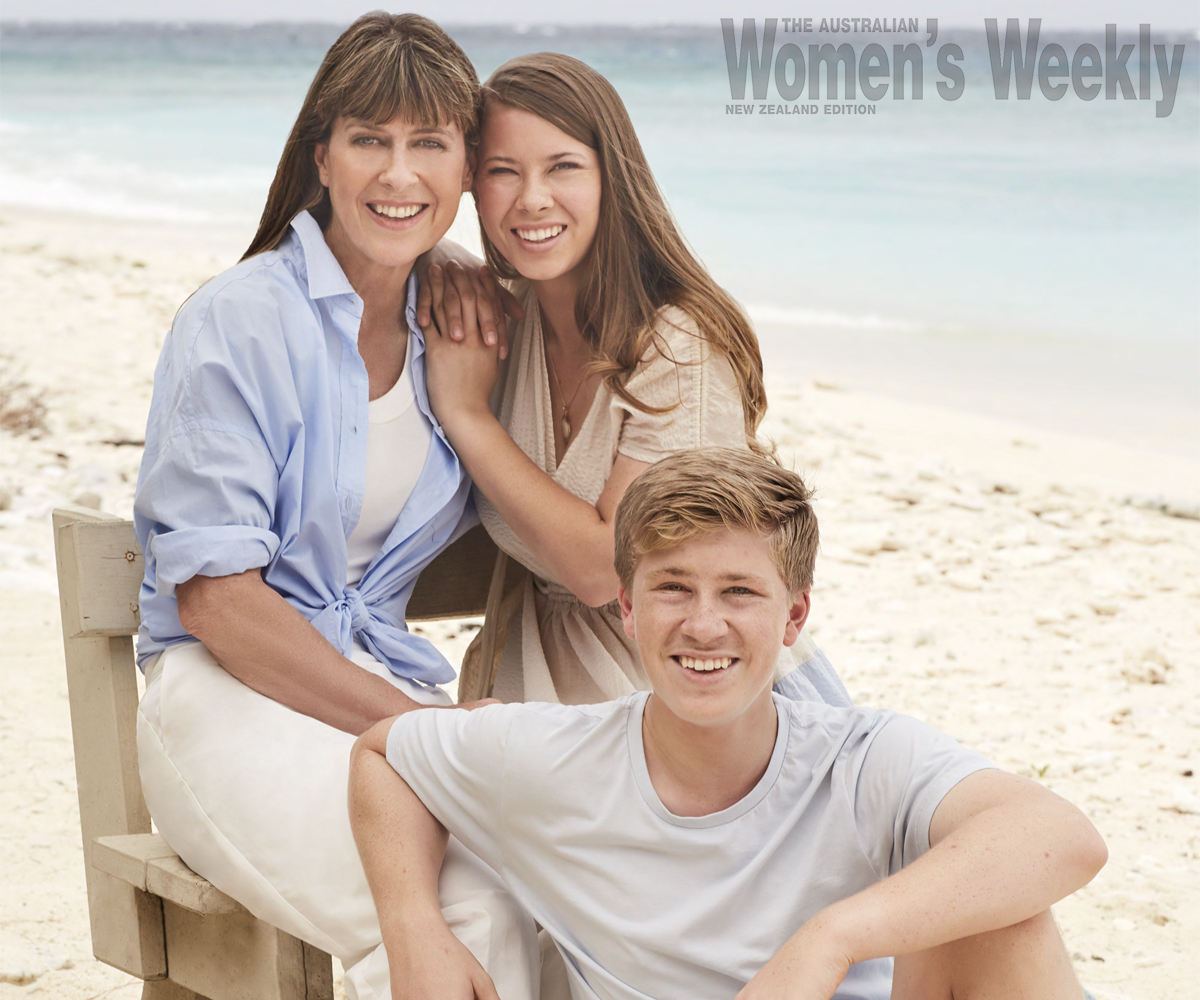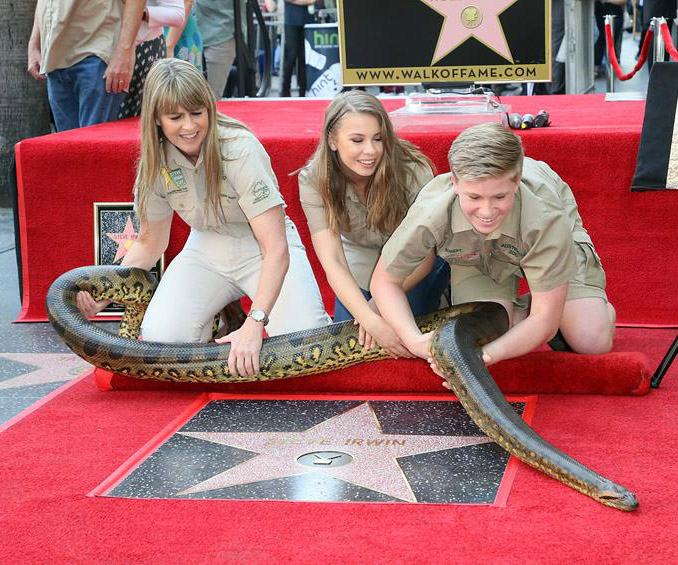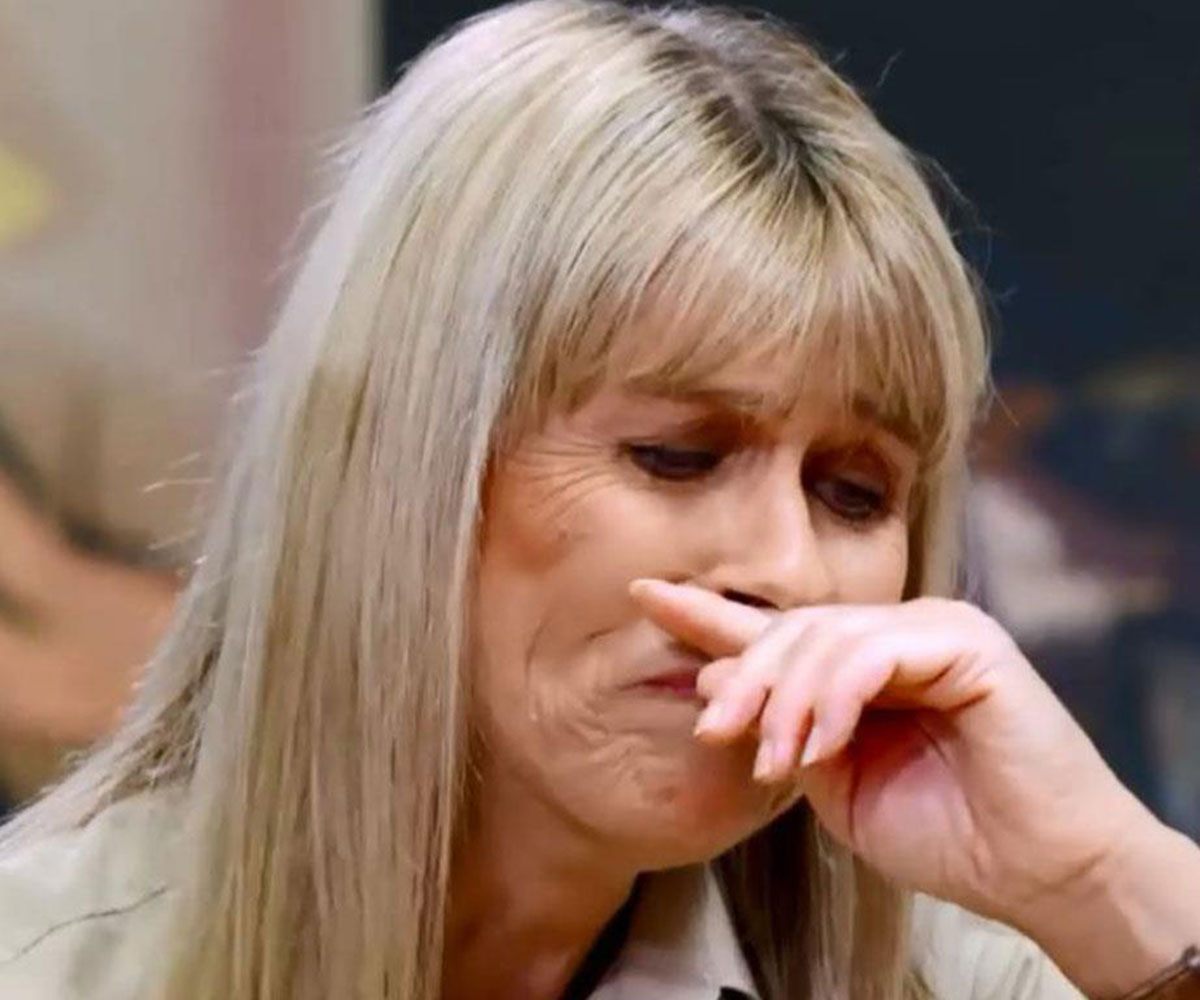Robert Irwin, teenage son of the original wildlife warrior Steve Irwin, stands outside the entrance to a magnificent century-old timber Queenslander house.
One moment he is joking with his older sister Bindi’s boyfriend Chandler Powell – a good-natured rough-and-tumble, push-and-shove mateship – and the next he is running through leaf-scattered undergrowth, bending to pick up a tiny ball of fluff that has fallen from a nearby tree.
“It was the sweetest thing,” recalls his sister Bindi, later.
“Robert spotted a baby bird falling from its nest in the upper branches of the tree. It was struggling on the ground and the father bird was frantic and distressed. The baby bird couldn’t fly yet, so there was no way that the mother could get it back into the nest, and if it stayed on the ground then some other bird would come along and kill it. There was no way Robert would let that happen.
“He jumped up on Chandler’s shoulders and they tried to put the little chick back but even together they weren’t tall enough. So Chandler got into the golf buggy and repositioned it under the tree and Robert climbed up on top of its canopy and finally managed to put the chick back into the nest. That’s not the only fallen chick they helped. They must have rescued at least four while we were on Lady Elliot Island.”

Terri is sure that Steve would be very proud of both Bindi and Robert. Photography by Corrie Bond.
Not only is Lady Elliot a beautiful spot – seen from the air, the island looks a little like a white-rimmed teardrop in a deep blue ocean – but it is also the setting for a remarkable environmental transformation that is little short of a miracle.
Just a few decades ago, Lady Elliot Island was a dry and dust-blown backwater with little vegetation and no birdlife to speak of, except the odd muttonbird blown off course by the ocean winds. Yet today, the island is covered in plants – the result of an intensive and prolonged revegetation project that has become the foundation for a rejuvenated bird population that numbers in the hundreds of thousands.
Where else would the Irwin family choose to go on holiday?
The truth is that they have been coming here ever since Bindi Irwin was born. It is, she says, her favourite place on earth and it holds some of her dearest and earliest memories of her father Steve, who tragically died aged just 44 after an encounter with a stingray on the Barrier Reef in 2006.

It would be hard to find a better example of how the Irwin family rolls than this heart-warming story about rescue and responsibility.
All of them – Terri, Bindi and Robert – have inherited a clear and unshakeable dedication to doing whatever they can to help the animal kingdom survive and prosper in a world overrun with pollution, development, environmental disaster and the increasingly obvious threat of global warming.
With that kind of commitment so deeply embedded in their DNA, it’s hardly a wonder that they should gravitate during their private time to a place like Lady Elliot Island, a small but flourishing tropical coral paradise at the southern tip of the Great Barrier Reef off Australia’s Queensland coast.
The Irwins have invited The Australian Women’s Weekly to spend three days with them here, allowing us an intimate glimpse into their private world, well away from Australia Zoo and the constant demands of running one of the biggest tourist attractions in the country.

For the Irwin family and Bindi’s boyfriend, Chandler Powell, Lady Elliot Island is the perfect place to unwind and indulge in their passions. photography by Corrie Bond.
“This memory is from way before Robert was born,” says Bindi, now 20.
“But it’s so clear, like it happened just yesterday. I remember coming to Lady Elliot when I was little with Mum and Dad. Dad would go surfing, while Mum and I would sit together on the beach and collect little pieces of coral to spell out our names on the sand.
“One morning, Dad had been out surfing and he came bursting into our little cabin. It was really early, about 5.30 in the morning, which is probably why I remember it so well. He said, ‘Quick, you guys have got to get up – the sea turtles are about to hatch. I don’t know how Dad did it, but he always knew exactly when the sea turtles would hatch. It was the most amazing thing.
“Mum and I stumbled outside, and Dad hustled us down to the beach. We sat down with him on the sand. I was a little cold and Dad put his arm around me. Then, sure enough, the sand started to bubble and shift, and these tiny sea turtles began to dig their way to the surface, dozens and dozens of them.
Then, because we are who we are, we went into defence mode because we didn’t want any of the birds to eat the turtles. Dad, Mum and I spread out our arms, linked them together and hovered over the baby turtles to make sure that they were safe and could reach the water alive.
We were so worried because we didn’t want the seagulls to get them. They were crawling their way to the sea, crawling over pieces of coral. They were so determined and wouldn’t let anything stop them. It was just the most wonderful experience.”
It’s not surprising that the scene of such a magical experience has become one of the Irwins’ favourite destinations.
Indeed, Lady Elliot Island, a tiny coral cay about 90km off the Queensland coast, is their most visited holiday spot, a place where they let down their hair, turn off their mobile phones and relax.
It’s here, inside a highly protected green zone – Lady Elliot is a 45ha island sanctuary and marine park with more than 1200 species of marine life, including manta rays and sea turtles – that the Irwins can shrug off their signature khakis and be themselves.
Here, Terri reveals to The Australian Women’s Weekly that the tragic death of her husband Steve drew the family together and made the bonds between them even stronger. That strength, she says, carried them through many years of grief and laid the foundation for a family tie that is extremely close.
“We are a family who works together, lives together and holidays together – we spend almost every moment in each other’s company, whether it’s at Australia Zoo or on one of our conservation properties here in Australia or making a documentary somewhere in Africa, so it’s vitally important that we have great relationships – and we do,” says Terri.
“We communicate well, and I think it’s a natural effect of losing Steve. I think we became closer and stronger as a family and we have developed this awareness that allows us to truly value the people closest to us even more than we already did.

Steve and a young Bindi on Lady Elliott Island Image: Australia Zoo Archives
It’s sad that it takes a tragedy such as Steve’s death to amp that up in your life, but it does make you want to live every day to the fullest and appreciate the people you love. I’m the first to admit that I can be a little overwhelming sometimes, but I have a saying that I think is very true. It’s that the meaning of life is unconditional love and that’s what we have for each other.”
During our three days on Lady Elliot Island, the Irwins, accompanied by Chandler, reveal themselves to be funny, warm and welcoming.
Robert and Chandler get on like brothers. Chandler, an American and a former wake-boarding champion, is 22, while Robert is 15. That seven-year age gap is the same gap that separated Steve Irwin from his best friend Wes Mannion.
“We only just figured that out the other day,” says Chandler. “That’s pretty freaky. But Robert and I really are like best mates. He’s great to be around. We both love the outdoors life. In fact, I count myself very lucky. I get to walk side by side with the girl I love. I get to work in a zoo with animals that are just amazing. I’m a lucky guy.”

The island holds special memories for Bindi and Terri, who would holiday there with Steve. photography by Corrie Bond.
The Irwins are extremely tactile. Not only do Chandler and Bindi walk almost everywhere hand-in-hand, but when Bindi and Terri share time together, they do likewise.
“We hold hands all the time,” says Terri.
“If we go for a walk around the island, we’re holding hands. If we’re going to dinner, we hold hands. People think that’s weird but it’s really just an expression of how close we are. Bindi is always texting me, asking me how I am and what I’m doing and how I’m doing. It’s lovely really. We’ve always been like that. It’s different with Robert, though. He won’t let me hold his hand. He just says, ‘Aww, Mum,’ and runs away as fast as he can.”
Terri has been coming to Lady Elliot for more than 25 years.
“We started coming out here when we were first married,” she says. “Back then there was a small resort infrastructure here and a couple of cabins but not much else, including no vegetation. That had been stripped away by guano mining back in the 1860s and the island had never recovered.
But the surfing here was always great, and Steve loved surfing. He and his best mate Wes Mannion would go out on the reef to catch a brilliant break. Unfortunately, it breaks right over a coral bar and they’d come back with cuts and scratches all over them.
Steve loved it anyway and he loved it so much that he wanted to take over the lease when it became available and look after it. In fact, we bid for the lease at the same time the current owner, pilot and engineer Peter Gash, tendered for it. He got it. We didn’t and that’s probably just as well because he’s done such a great job of rehabilitating the island.
“The phenomenal thing about Lady Elliot is how I feel when we get here. There are no phones. There is Wi-Fi if you want it, but otherwise we leave the world behind. Bindi and I will go walking around the island. Robert and Chandler will go out looking for the sea turtles or some other marine life. It’s just the most idyllic spot to relax.”
Today, Lady Elliot Island is a celebrity poster-girl for eco-tourism and conservation.
When Peter Gash took over the lease in 2005, it was little more than a bleached, bare lump of coral. Today, after extensive replanting, the island has regenerated with much of its original vegetation – octopus bushes, casuarinas and Pisonia – and it is home to more than 200,000 birds, including pale-headed noddies, buff-banded rails, ruddy turnstones and silvereyes.
Frigate birds soar overhead, boobies are common, muttonbirds descend on the island at night, and it is even home to several breeding pairs of rare red-tailed tropic birds. So impressive is the rehabilitation that Prince Charles nominated the island as the venue for a conservation summit for influential business executives held there during his visit last year.

In their own way both of Steve’s children are following in his footsteps. photography by Corrie Bond.
One of the big attractions on the island for Robert is the bountiful marine life.
Although he is just 15, Robert has a burgeoning reputation as a wildlife photographer – his work has received highly-commended accolades from The Smithsonian Institute in New York – and he has been busy documenting both the manta ray population and the migratory whales that pass by on their journey south.
Robert was previously on the island in July, filming a segment for the family’s latest TV series, Crikey, It’s the Irwins (available on SKY’s Animal Planet). He was helping with scientific research – Project Manta – into the manta ray colonies that come here to mate during the winter.
“We were trying to find courting manta rays because when they get together, they have unusual mating rituals,” says Robert. “They actually follow each other, so you’ll have a female followed by a bunch of males and then the males start to drop off, they start to get tired, and she just keeps on going until there is only one male left, and that is the one she mates with.
“We were up to very late-stage courtship. There were only three manta rays: one female and two males, and they were doing these fast-paced acrobatics underwater, twirling around, so I was right in the thick of it. I was snorkelling as fast as I could to get up to them because I was trying to get photographs of their underbellies for identification because that’s how you ID a manta ray, with the little markings it has on the underbelly.
“I was photographing the female and she was getting tired of these males. She had had enough, so she kind of used me as a shield. She went around me and twirled, and the males kept coming and, as I moved, one just went whack and hit me straight in the face. It didn’t mean to. As he turned, he just hit me. I wasn’t knocked out, but I wasn’t expecting it, so I was a bit stunned. When I got to shore, I pulled off my diving mask and it was full of blood. It was so cool.”

The family meets Prince Charles during his visit to the island in April 2018. Image: Getty Images
Some may consider that Robert’s willingness to film with manta rays is dangerous. His father Steve died after he was wounded by a stingray. But Terri has no concerns.
“I am more worried about him drowning than encountering a shark or a manta ray in the water,” she says.
“When you lose someone who is the strongest member of your family, you think that those who are still here must be more vulnerable in some way, that you have to be extra careful. I spend a lot of time looking after myself – I run and exercise – because I don’t want to leave my kids. That would be crumby. And I do worry about them more than most mothers.
Bindi loves to dive – bungee jumping, skydiving, diving into the ocean. She loves it, so I’m not going to say she can’t do it. Robert loves photography. I am not going to say he can’t do it.
“I think Steve would be very proud of both Bindi and Robert and the way they tackle the world. I know I’m proud of them and I’m sure he would be, too.”



